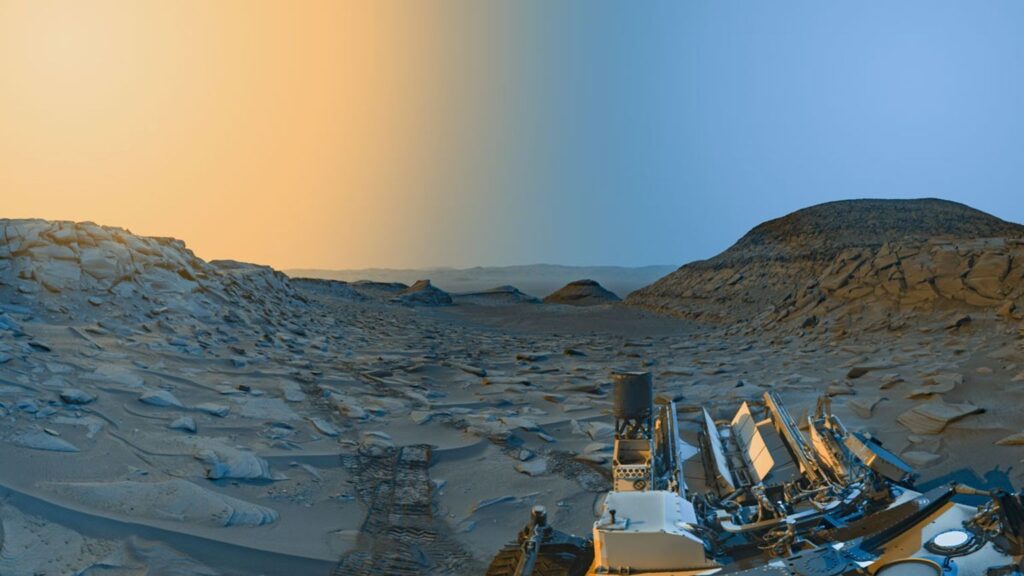Mars has always fascinated humanity with its reddish hue and mysterious terrain. As NASA advances its exploration of the Red Planet, the capture of high-definition (HD) images has marked a pivotal achievement. These stunning visuals, showcasing Mars in unprecedented clarity, have enhanced scientific research and inspired millions worldwide. Here’s how NASA achieved this extraordinary feat and why it matters for the future of space exploration.
NASA’s Mars Missions: The Key to Capturing HD Images
NASA’s extraordinary missions, such as orbiters, rovers, and landers, have been instrumental in capturing high-resolution images of the Red Planet. These missions combine cutting-edge technology and innovative techniques to deliver breathtaking visuals of the planet’s surface.
Mars Reconnaissance Orbiter (MRO): Pioneering High-Resolution Imaging
Launched in 2005, the Mars Reconnaissance Orbiter (MRO) is equipped with the High-Resolution Imaging Science Experiment (HiRISE) camera. HiRISE provides some of the most detailed images ever captured of the red planet, with a resolution of up to 25 centimeters per pixel. This allows scientists to study intricate features such as ancient riverbeds, sand dunes, and potential landing sites for future missions.

Curiosity and Perseverance Rovers: Capturing the Red Planet in 4K
NASA’s Curiosity and Perseverance rovers have taken the neighbour planet imaging to new heights. Equipped with Mastcam and Mastcam-Z cameras, these rovers deliver stunning panoramic and zoomed-in images of the Martian terrain. Perseverance is currently exploring the Jezero Crater, a region believed to have hosted water billions of years ago, and its HD images are critical in identifying signs of ancient life.
Ingenuity Helicopter: Aerial Views of Mars
The Ingenuity helicopter, part of the Perseverance mission, captures unique aerial images of the Red Planet. This technology provides a bird’s-eye view of the terrain, offering new perspectives that complement rover-based observations.
How NASA Overcame Challenges to Capture HD Images of Mars
Capturing high-definition images on a planet millions of kilometers away is no small task. NASA overcame numerous challenges to make this possible:
- Advanced Camera Technology
The cameras aboard orbiters and rovers are designed with precision optics and large sensors to capture high-quality images. These cameras operate efficiently despite Mars’ extreme temperatures and dusty environment. - Data Transmission Over Vast Distances
Mars is an average of 225 million kilometers away from Earth, making data transmission a challenge. NASA uses the Deep Space Network (DSN) to transmit compressed image data back to Earth. This ensures that high-resolution images reach scientists without degradation. - Image Processing
Once received, raw images undergo extensive processing to enhance clarity and detail. This post-processing ensures that both scientists and the public can interpret and enjoy the visuals effectively.
Why HD Images of the Red Planet Are Game-Changing
The high-definition images of the Red Planet have transformed our understanding of the planet and its history. Here’s how:
- Geological Insights
HD images reveal Mars’ geological history, including evidence of ancient rivers, volcanic activity, and potential tectonic movements. These insights are crucial for understanding Mars’ evolution and its potential to support life. - Mission Planning
Detailed images help NASA identify safe and scientifically valuable landing sites for future missions, including robotic and human exploration. - Public Engagement
The stunning visuals captured by NASA’s missions inspire global audiences, fostering excitement and support for space exploration. They make the mysteries of Mars accessible to everyone, from scientists to space enthusiasts.
The Future of the Red Planet Exploration and Imaging
As technology advances, future missions to the neighbour planet will capture even more detailed images. Upcoming projects, such as the Mars Sample Return Mission and potential human landings, will rely on state-of-the-art imaging systems to achieve their goals.
High-definition images have not only brought us closer to the neighbour planet but have also paved the way for future exploration. They remind us of humanity’s unyielding curiosity and determination to uncover the secrets of the universe.
Conclusion
NASA’s success in capturing HD images of Mars is a testament to human ingenuity and technological progress. From the HiRISE camera on the Mars Reconnaissance Orbiter to the sophisticated systems on the Perseverance rover, these images offer invaluable insights into the Red Planet. As we continue to explore Mars, these visuals will play a critical role in shaping our understanding of the planet and our place in the cosmos.
By optimizing our technological capabilities, NASA continues to make history, bringing Mars closer to us—one high-definition image at a time.
For more interesting content, check out our site: https://techvibezonline.com


